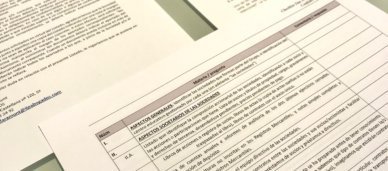
16.04.2025
What is the Carbon Border Adjustment Mechanism or “CBAM”?
 Por
Cobo Aragoneses, José Luis
Por
Cobo Aragoneses, José Luis The Carbon Border Adjustment Mechanism (CBAM) is a crucial initiative of the European Union within the framework of its climate policy. This mechanism is implemented to address the significant risk of what is known as “carbon leakage.” Carbon leakage occurs when companies based in the EU relocate their carbon-intensive production to countries with less stringent climate policies than those in the EU, or when EU products are replaced by more carbon-intensive imports.
Thus, the CBAM aims to prevent companies from shifting their production to countries with less stringent climate regulations. Additionally, by adjusting the price of imported products with an additional cost derived from the emissions generated during their production, the CBAM levels the playing field. This ensures that imported products and those produced within the EU compete on equal terms.
When does the Carbon Border Adjustment Mechanism come into effect and how does it operate? Practical Example
The CBAM will come into full effect in 2026. It is currently approved (since May 2023) and is being gradually implemented until its full enforcement.
How does the Carbon Border Adjustment Mechanism operate?
The example we describe below is also presented in video format, in case you are interested:
Practical Example:
Let’s consider a Turkish company that exports cement to the EU. Here’s how the CBAM would work in this case:
- Production and Importation: The Turkish company produces 1,000 tons of cement for export to the EU. The production of this cement generates 800 tons of CO2 (0.8 tons of CO2 per ton of cement).
- Emission Declaration: The importer in the EU declares the 800 tons of CO2 associated with the imported cement.
- CBAM Cost Calculation: Assuming the average price of emission allowances in the EU ETS is €80 per ton of CO2, the initial CBAM cost is calculated as follows: 800 tons CO2 × €80/ton = €64,000.
- Adjustment for Carbon Price in the Country of Origin: Assuming Turkey has a carbon tax of €20 per ton of CO2, the adjustment would be: 800 tons CO2 × €20/ton = €16,000.
- Final CBAM Cost: The final cost is the initial cost minus the adjustment, which is €64,000 – €16,000 = €48,000.
- Purchase of CBAM Certificates: The importer must purchase CBAM certificates worth €48,000.
- Post-Verification: If a subsequent audit demonstrates that the actual emissions were lower, for example, 750 tons of CO2, the importer could resell the certificates corresponding to the 50-ton CO2 difference.
- Impact on Price: The importer will likely pass this additional cost onto the price of the cement, making it more price-comparable with cement produced in the EU under the EU ETS.
- Incentive for Emission Reduction: Consequently, the Turkish company now has an incentive to reduce its emissions or invest in cleaner technologies, as this would lower the CBAM cost and make its product more competitive in the EU market.
- Affected Products: Currently, the following products are affected by this mechanism: Iron and steel, cement, fertilizers, aluminum, electricity, and hydrogen.
- Transitional Period: During the transitional period from 2023 to 2025, importers must report quarterly on the emissions embedded in their imports, without financial obligations.

Si te ha interesado este artículo no dudes en leer:
What are Carbon Credit Buffers and How Do They Operate in Relation to Emission Risks?
Starting from 2026, importers will be required to purchase CBAM certificates. The price of these certificates will be based on the weekly average price of EU ETS emission allowance auctions. The carbon price already paid in the country of origin will be considered to avoid double taxation. A review and possible expansion to other sectors and indirect emissions are anticipated before 2030.
The implementation of the CBAM will be coordinated with the gradual reduction of free allocation of emission allowances in the EU ETS for the affected sectors.
If you enjoyed this article, you might also find the following reading interesting:
What are high-integrity carbon credits?
Contacto No te quedes con la duda, contacta con nosotros. Estaremos encantados de atenderte y ofrecerte soluciones.








